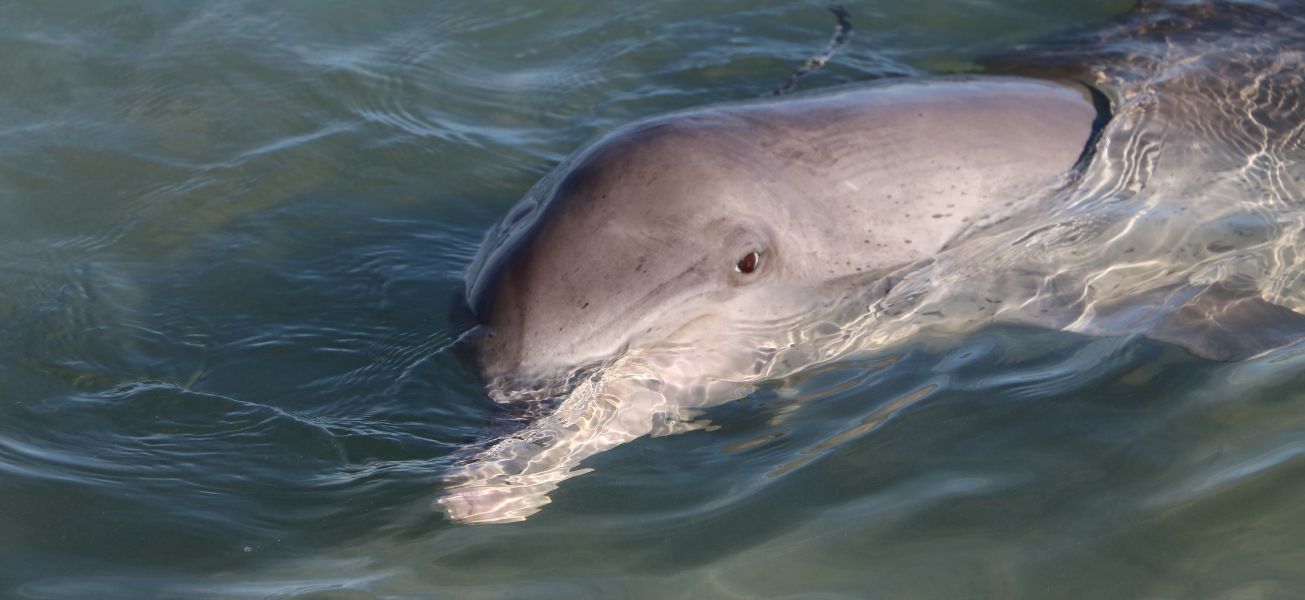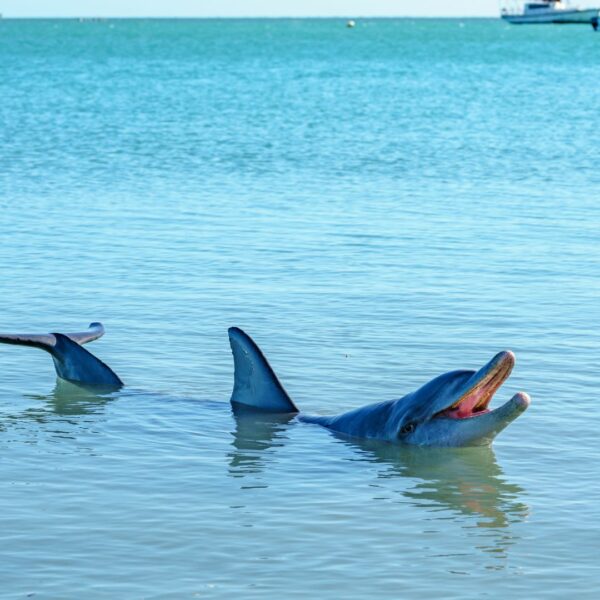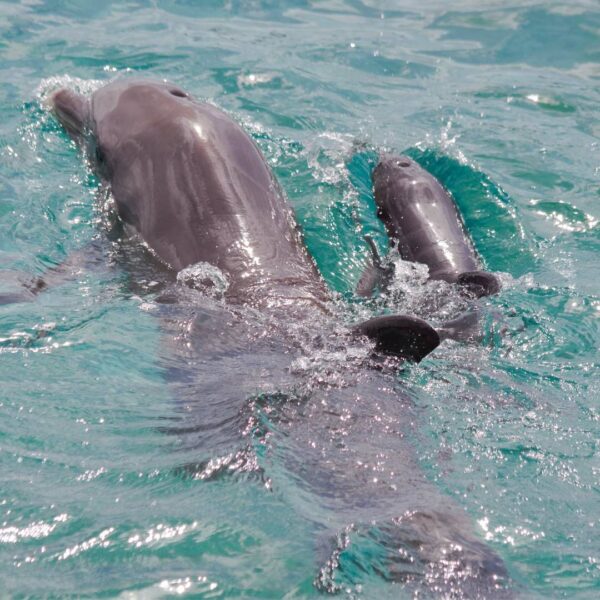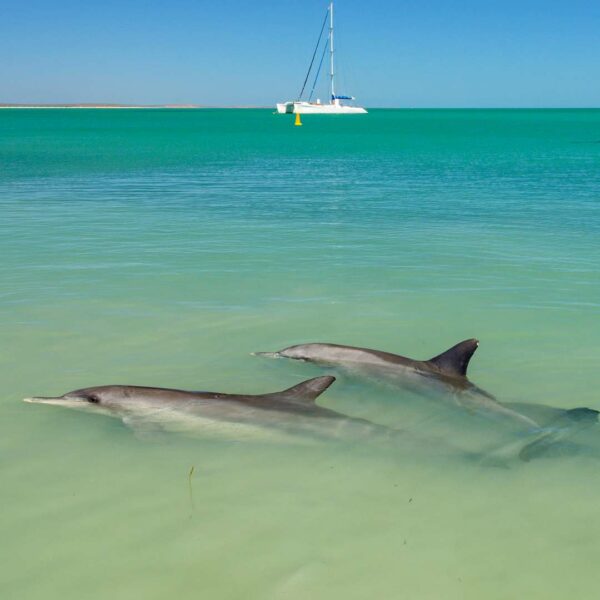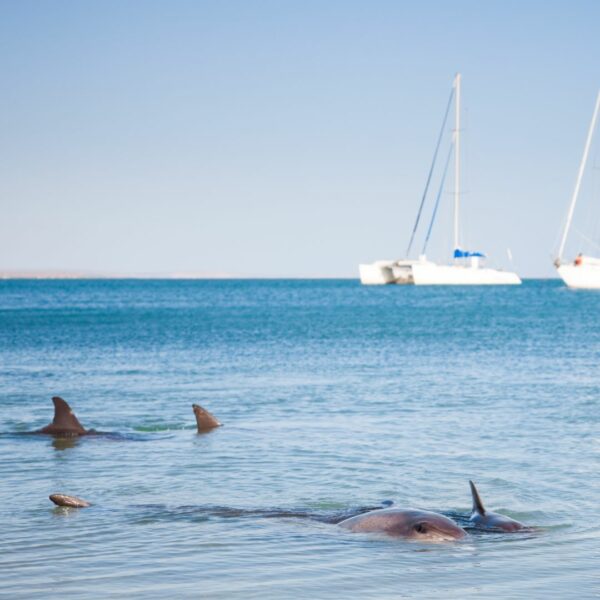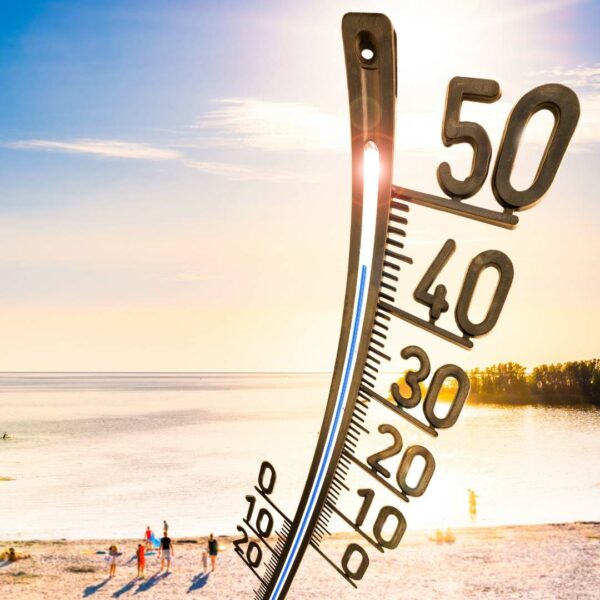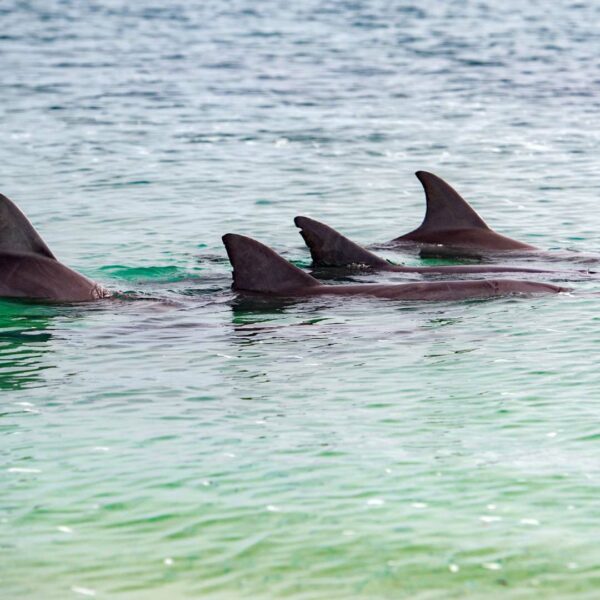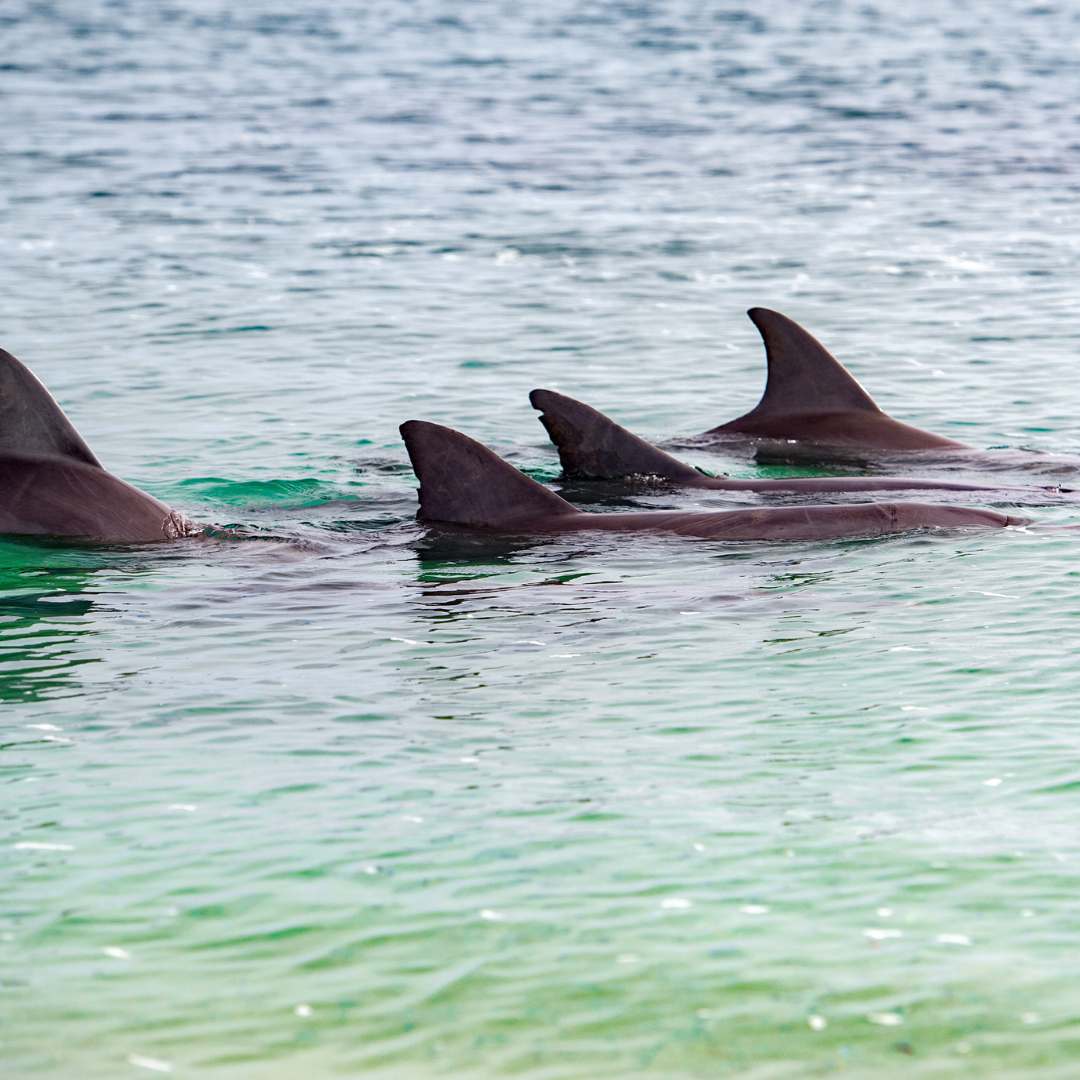Feeding wild dolphins has been shown to negatively alter dolphins’ behaviour, reduce maternal care for calves, cause aggression among dolphins, reduce their home range, and increase the risk of injury to dolphins from boat strikes and entanglements.
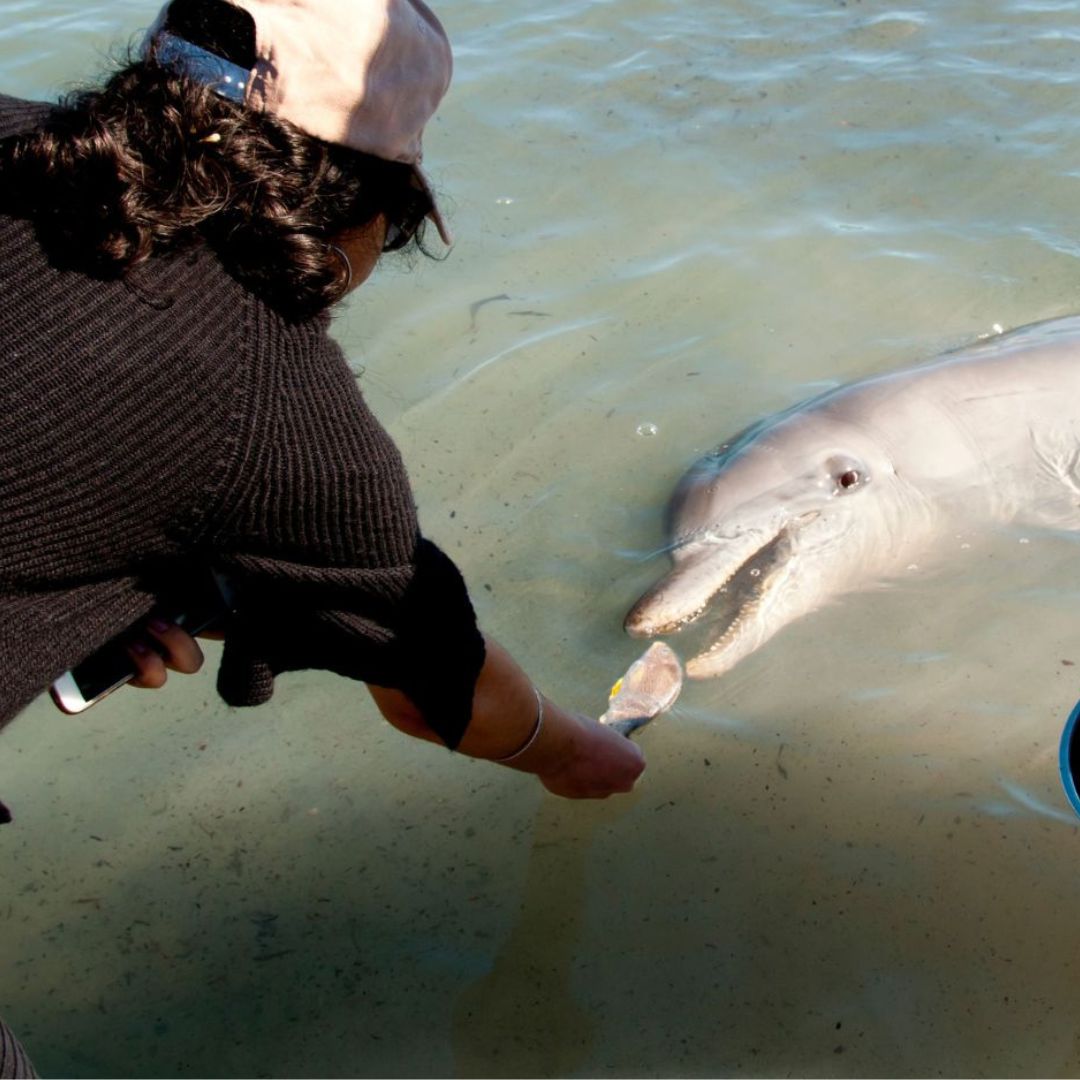
What are dolphin feeding programs?
Imagine you’re swimming in the wild, going about your day with your pod, when a person encourages you to come to the shore and offers you a meal, no strings attached. It might seem like an offer too good to resist. But what if the free meal comes with unintended consequences?
That’s the scenario faced by wild dolphins in dolphin feeding programs. These programs involve enticing dolphins with food, slowly getting them accustomed to human presence, and in time dependent on humans. It’s dangerous because it entices wild dolphins into a system that significantly disrupts their natural way of life.
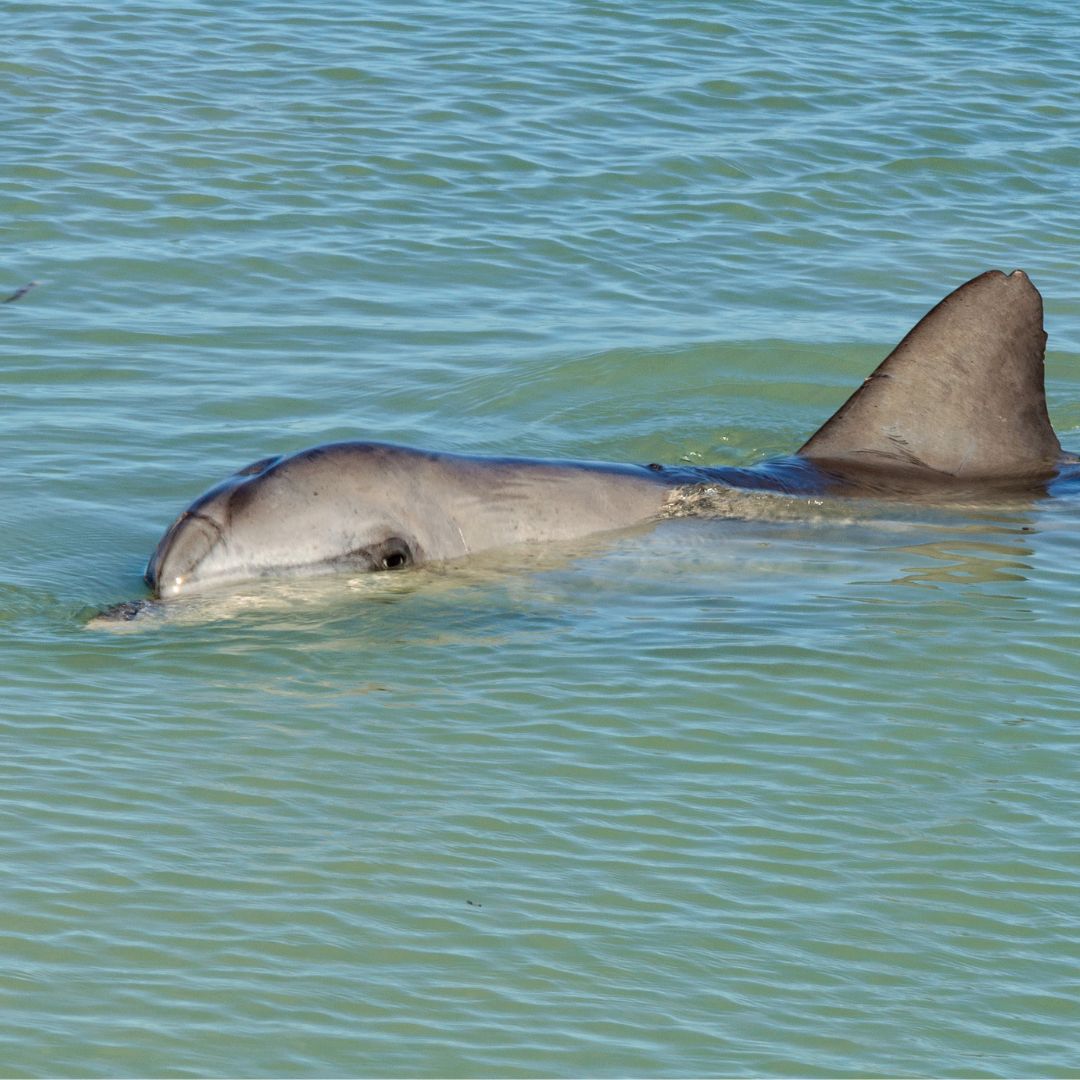
Dolphins beg for food
Feeding wild dolphins has led to dolphins exhibiting unnatural behaviours. Instead of hunting and roaming the open seas, they’ve been known to patrol the waters close to boats, scavenging for leftovers, and begging for food.[1] In Bunbury and Monkey Mia Western Australia, dolphins who are fed now approach boats and beg for food.[2] Remember, every tossed treat encourages this pattern, robbing them of their inherent, wild nature.
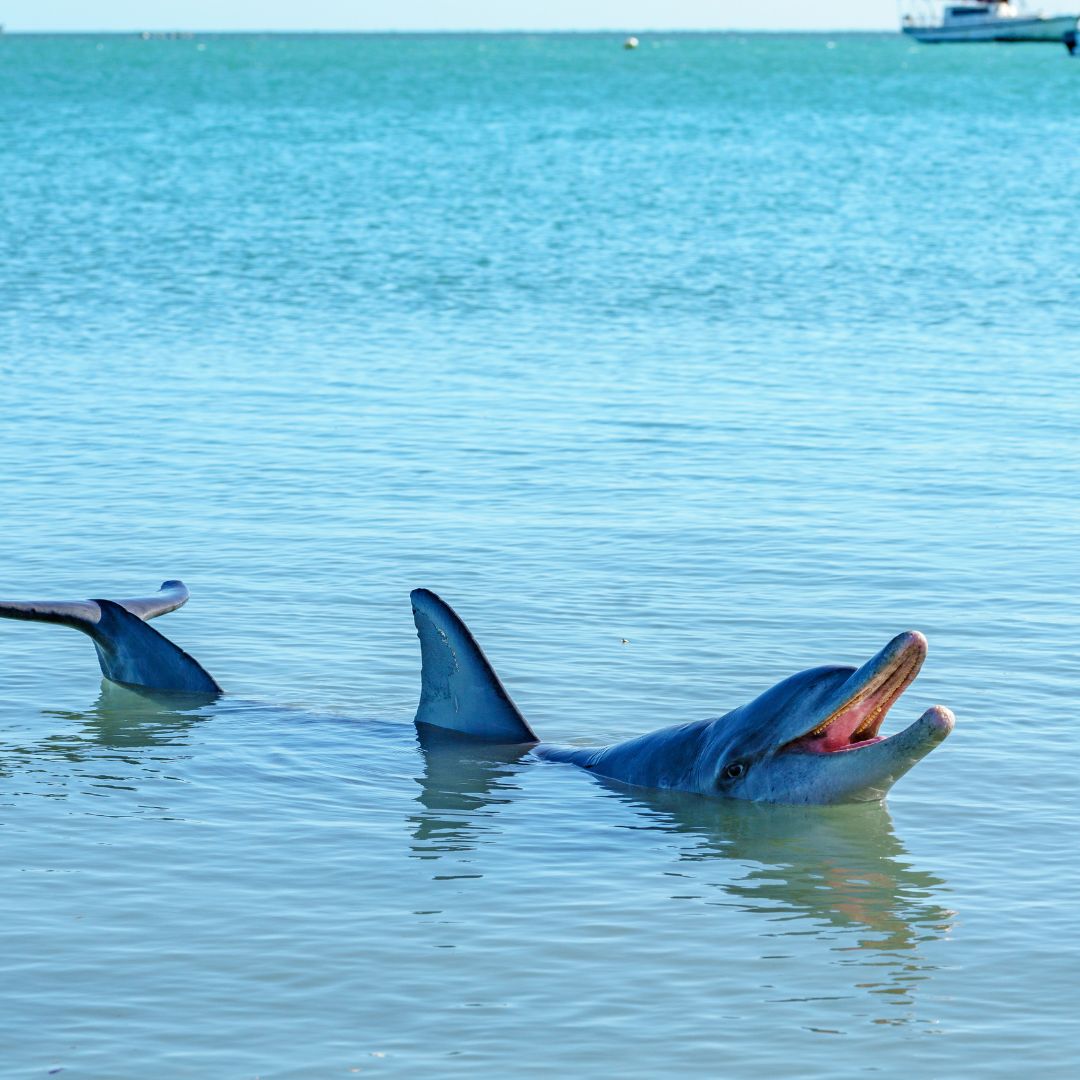
Impacts the mother and calf bond
Research shows that when dolphins are fed by humans, they pay less attention to their offspring. These young dolphins spend less time in the protective space beneath their mother’s belly, a position typically associated with infant care, and instead are found more often at a distance from their mothers. This change in behaviour suggests that human feeding can unintentionally disrupt the natural mother-calf bonding process in dolphins.[3] In Bunbury Western Australia, where you can feed wild dolphins, hand-fed mothers have half the reproductive success of non hand-fed mothers. Researchers warn, “…food-provisioning has the potential to… exacerbate the risk for this population to decline”. [4]
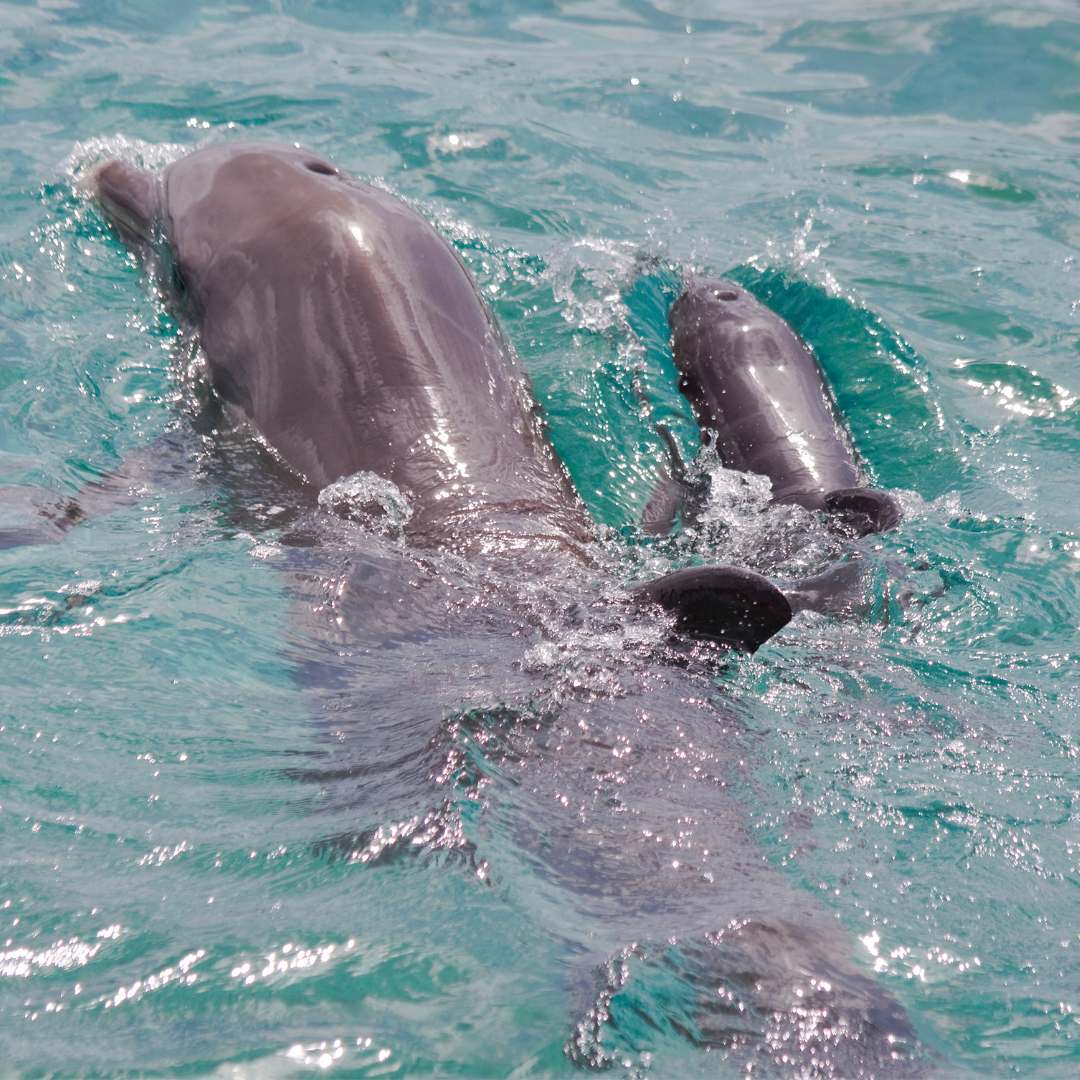
Reduces dolphins' home range
Instead of swimming far and wide, hand fed dolphins linger close to the feeding sites, waiting for handouts. Research shows their world becomes significantly smaller, limiting where they socialise and feed. It’s not just these fed dolphins who are affected. Their young ones, although not fed directly, end up inheriting this confined lifestyle, learning to stay within these restricted boundaries as they mirror their mother’s behaviour. This reliance on hand-fed fish is more than just a change in diet; it’s a shift that carries potential risks to their social dynamics and even survival. After all, a smaller world is not necessarily a safer one. [5]
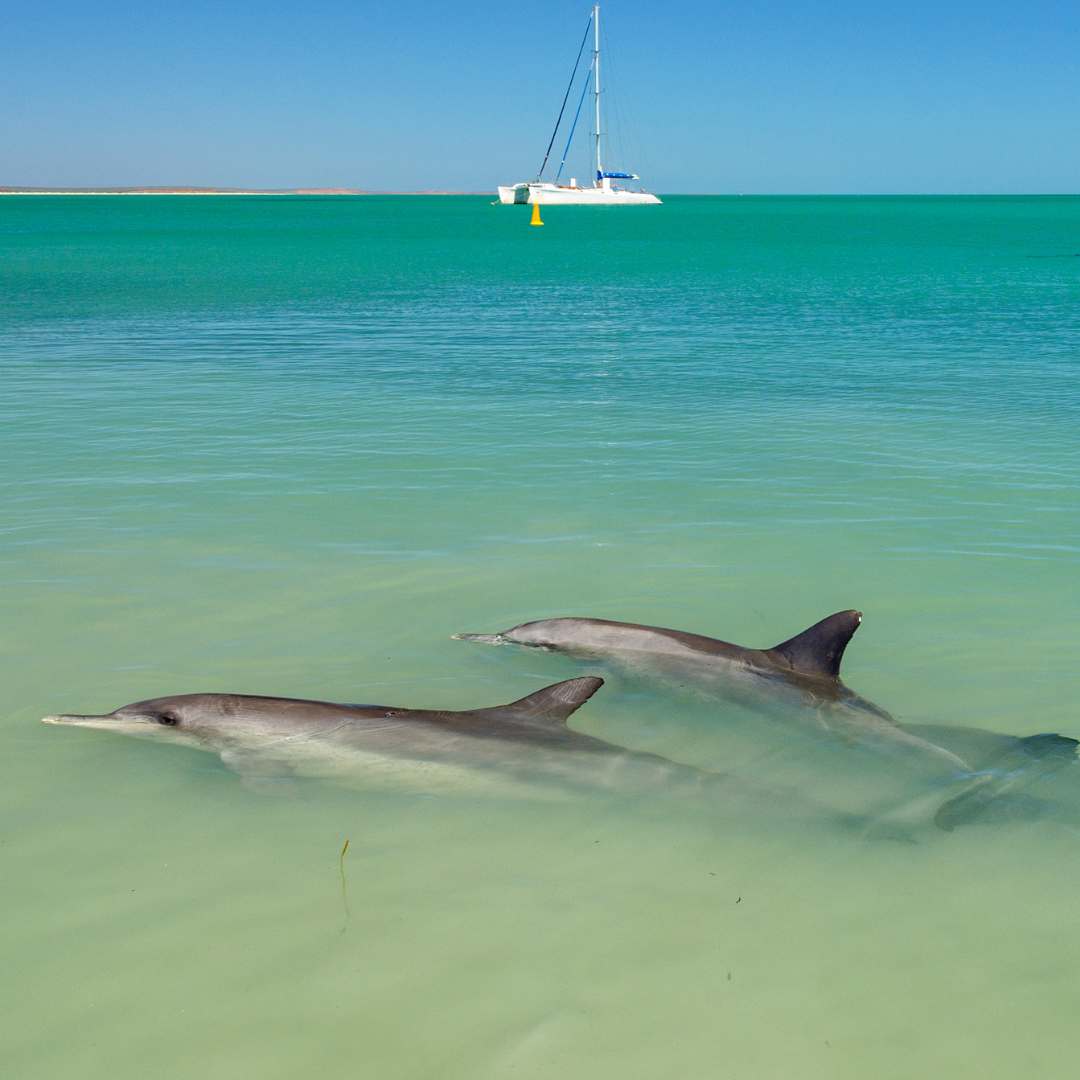
Increases risk of injury to dolphins
Problematic behaviours, particularly begging, increases the risk of dolphins being harmed by a boat strike or fishing gear.[6] In Perth, Western Australia, wild dolphins conditioned to take food from humans have higher incidences of boat strike injury and entanglement in fishing gear compared to dolphins not conditioned to take food from humans.[7]
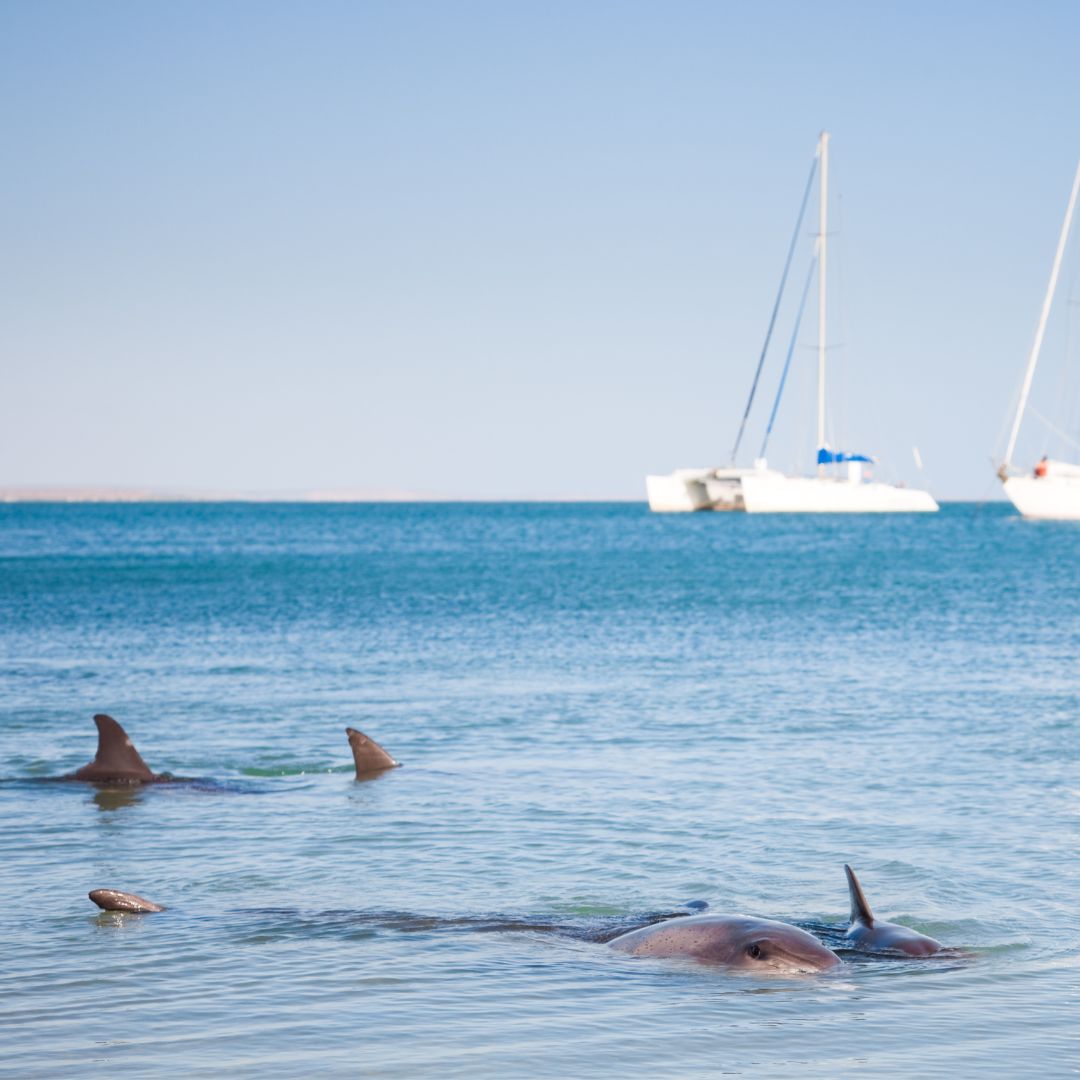
Increases pressure on their survival after extreme weather events
Smaller home ranges means the dolphins who are home fed have a constrained ability to respond to ecological changes. This was observed following a severe marine heatwave in 2011. The scientists who studied the impact of this event say in their paper that wild dolphin feeding “… has marked impacts on dolphin activity, ranging behaviour and habitat use, with long-lasting maternal effects, thereby constraining the provisioned dolphin’s ability to respond to dramatic ecological changes caused by extreme climate events.” [8]
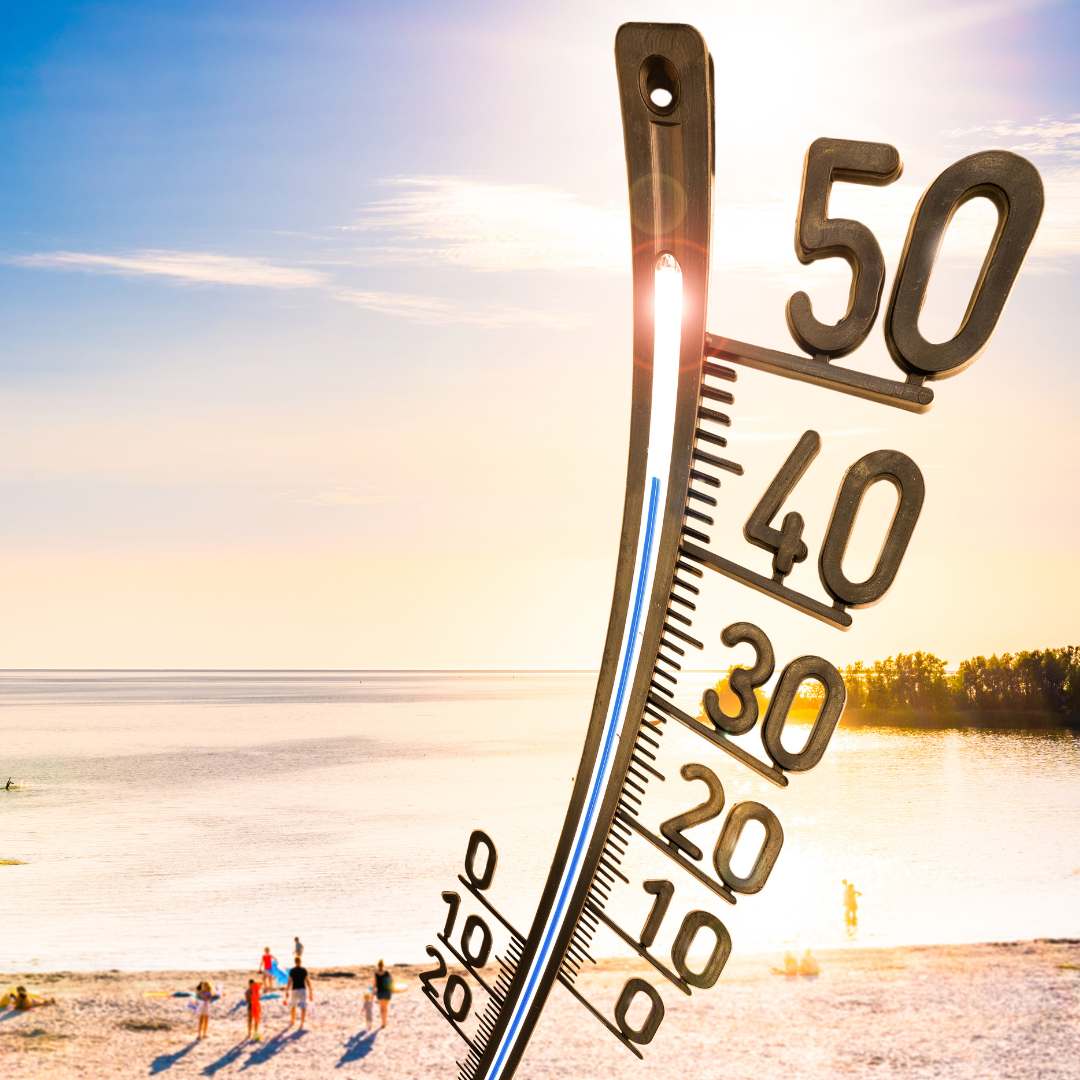
Where can I feed dolphins in Australia?
There are four places in Australia that still have permission to run dolphin feeding programs. Just because they are running, does not make them okay.
To learn more, check out how this issue was interrogated in the documentary, Dolphins Is Our Love Too Deep?
Yes, feeding wild dolphins is illegal under Australian state and federal law. If you get caught doing so, you might receive a fine. The exemptions are for the four places that still have permission to do so.
While it is illegal to feed dolphins everywhere else, the following places can still run dolphin feeding programs:
1️⃣ Tangalooma Island Resort, Queensland
2️⃣ Tin Can Bay, Queensland
3️⃣ Monkey Mia, Western Australia
4️⃣ Bunbury, Western Australia
As these four sites have legal exemptions to run these programs, it is up to you and your loved ones to pledge not to participate in this harmful practice.
If you love dolphins – the best thing you can do is interact with them where they are genuinely wild and free.
